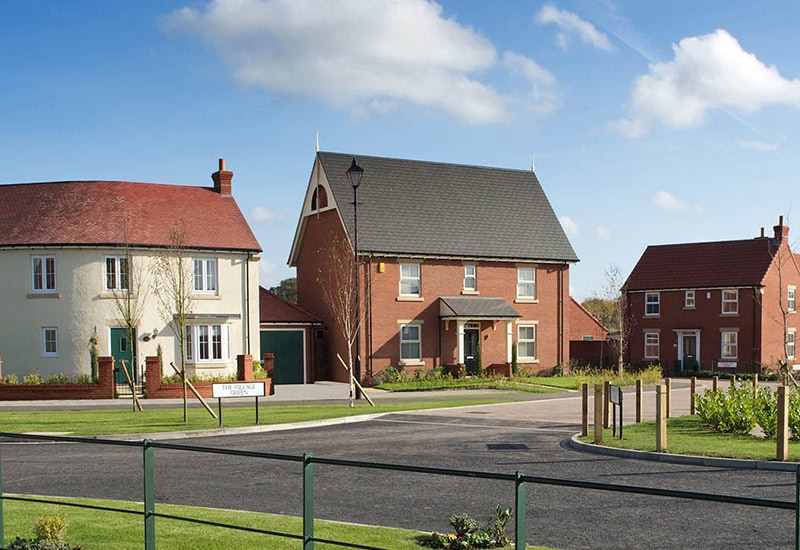Welcome to the first in a series of Insights exploring the role of smarter controls in increasing heat pump deployment. Over the next few weeks, we’ll explore how smarter controls, like the Passiv Smart Thermostat, can make heat pumps greener, cheaper and easier to use. Our first entry explores the role of controls in improving heat pump efficiency. But first, a little background on the challenge at hand…
The UK will have to decarbonise domestic heating if it is to meet its 2050 net zero targets. According to the National Audit Office, heating the UK’s 28 million homes accounted for 18% of all our greenhouse gas emissions in 2021. While great progress has been made on decarbonising power and transport (emissions from electricity having fallen by over 60% since 1990 and the UK’s millionth electric vehicle was registered in 2024), the same can’t be said for heat. Around 90% of UK homes still rely on fossil fuels, largely mains gas, for their heating.
The most likely technology to deliver heat decarbonisation will be heat pumps. The Committee on Climate Change says that 80% of UK homes will need a heat pump by 2050 and the Government has a range of policies supporting their uptake. From 2026, the Future Homes Standard will ban gas boilers in new-build homes and the Boiler Upgrade Scheme offers a generous £7,500 grant towards the cost of installing a heat pump in existing homes.
But if heat pumps are going to be the solution to the UK’s low-carbon heating challenge, they need to be green, affordable, easy to install, simple to use, and popular with the public. And at the moment, they just aren’t. The Government is targeting 600,000 installations a year by 2028 but in 2022, just 55,000 were installed and the National Audit Office has warned the target is unlikely to be met.
While new and more innovative heat pump designs are important, in this unique series of Insights, we’ll examine what role smarter controls can play in tackling this challenge and how they can help make heat pumps successful in the UK and beyond.
Heat pumps are, generally, very efficient. A new gas boiler will have an efficiency of 85% but a heat pump can have an efficiency of well over 300%. That’s because a heat pump extracts ‘free’ energy from an external source, usually the air or ground outside your home.
A heat pump’s efficiency is called its Coefficient of Performance or COP – an efficiency of 300% is the same as a COP of 3. A heat pump’s COP is a big factor in its running cost and carbon emissions. At current electricity prices and grid carbon intensities, a heat pump with a COP of 2.5 in the average UK home will cost £1,314 a year to run and emit 997 kg of carbon. Increase that COP to 3.5 and the cost drops to £938 and carbon falls to 712 kg. So efficiency makes a big difference!
The efficiency of a heat pump is largely determined by the flow temperature that it runs at (the temperature of the water that the heat pump sends into the radiators). A lower flow temperature means a higher COP because the heat pump isn’t having to work as hard. Flow temperatures are generally determined by the heat pump itself, regardless of the controls that have been fitted.
A third of heat pumps are still installed and commissioned to operate at a fixed flow temperature. That’s easy for an installer, but a disaster for a heat pump’s efficiency. The other two thirds use a weather compensation curve. That’s some settings the installer puts in the heat pump that tell it what flow temperature to produce for a given outdoor temperature. The idea is that the colder it is outside, the hotter the radiators need to be to keep the house warm.
This is great for the efficiency of a heat pump as long as the installer gets the settings exactly right. But this is an extremely difficult (indeed, impossible) thing to do. An installer will calculate the weather compensation curve at the point of installation using the best information that they have at the time – probably a heat loss calculation they have produced for the home.
But that weather compensation curve doesn’t change if they get it wrong and it doesn’t adjust to new information. Nor can it look at weather forecasts or factor in how the homeowner uses their heating system. So it’s better than using a fixed flow temperature, but there is definitely room for improvement.
It’s here that the latest generation of smarter heating controls, like the Passiv Smart Thermostat, can make a big difference.
The Passiv Smart Thermostat has been designed specifically to work with a heat pump. It removes the need for an installer to set a weather compensation curve (more about that later in the series). Instead, from the moment it is installed, it learns how a home heats up and cools down and how the heating system behaves. Then, it uses local weather forecasts to calculate the optimal way to meet a homeowner’s comfort requirements, continuously optimising the heat pump’s flow temperature to maximise its COP. The effect is a dynamic weather compensation curve, and one that is always right.
The Energy Saving Trust verified that Passiv Smart Thermostat increases the COP of a heat by 17% against a manufacturer’s standard weather-compensated controls. That increase makes a big difference to a heat pump’s carbon emissions and its running costs.
So smarter heat pump controls can benefit the environment and your pocket, but is that at the expense of your comfort? Stay tuned for the next in our series of ‘why heat pumps need smarter control’ where we’ll look at the role better controls can have in making comfort effortless with a heat pump.



